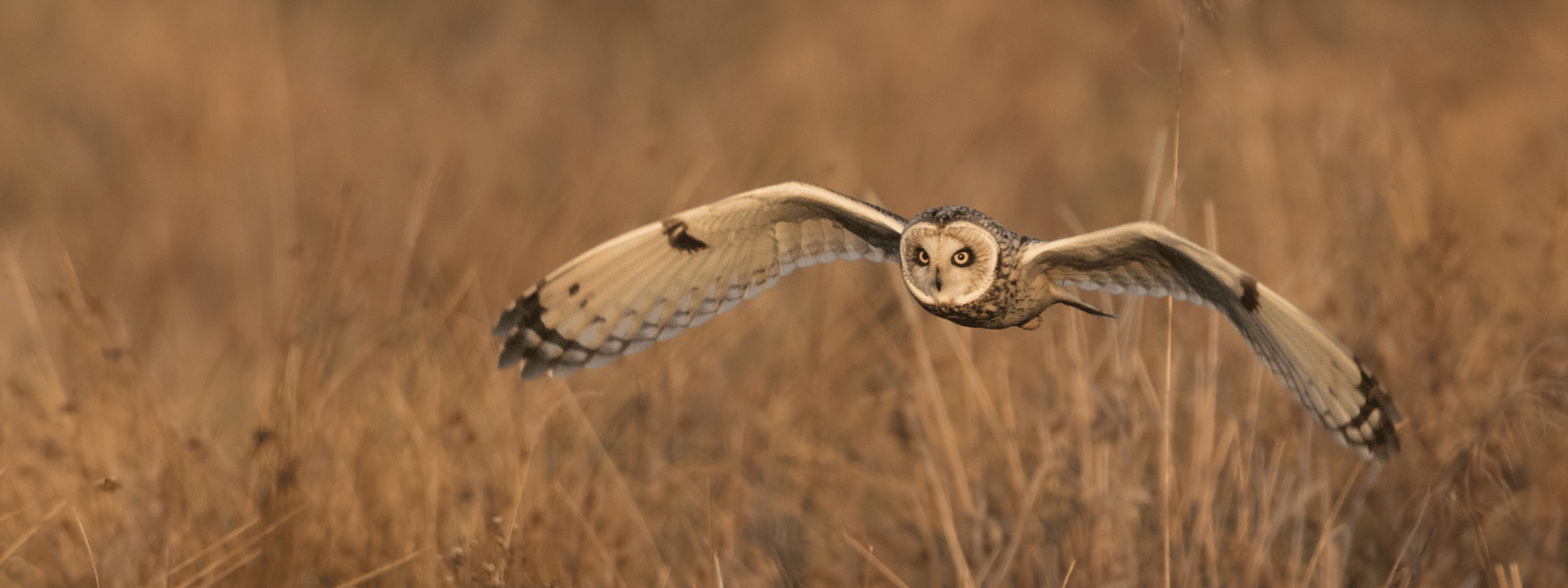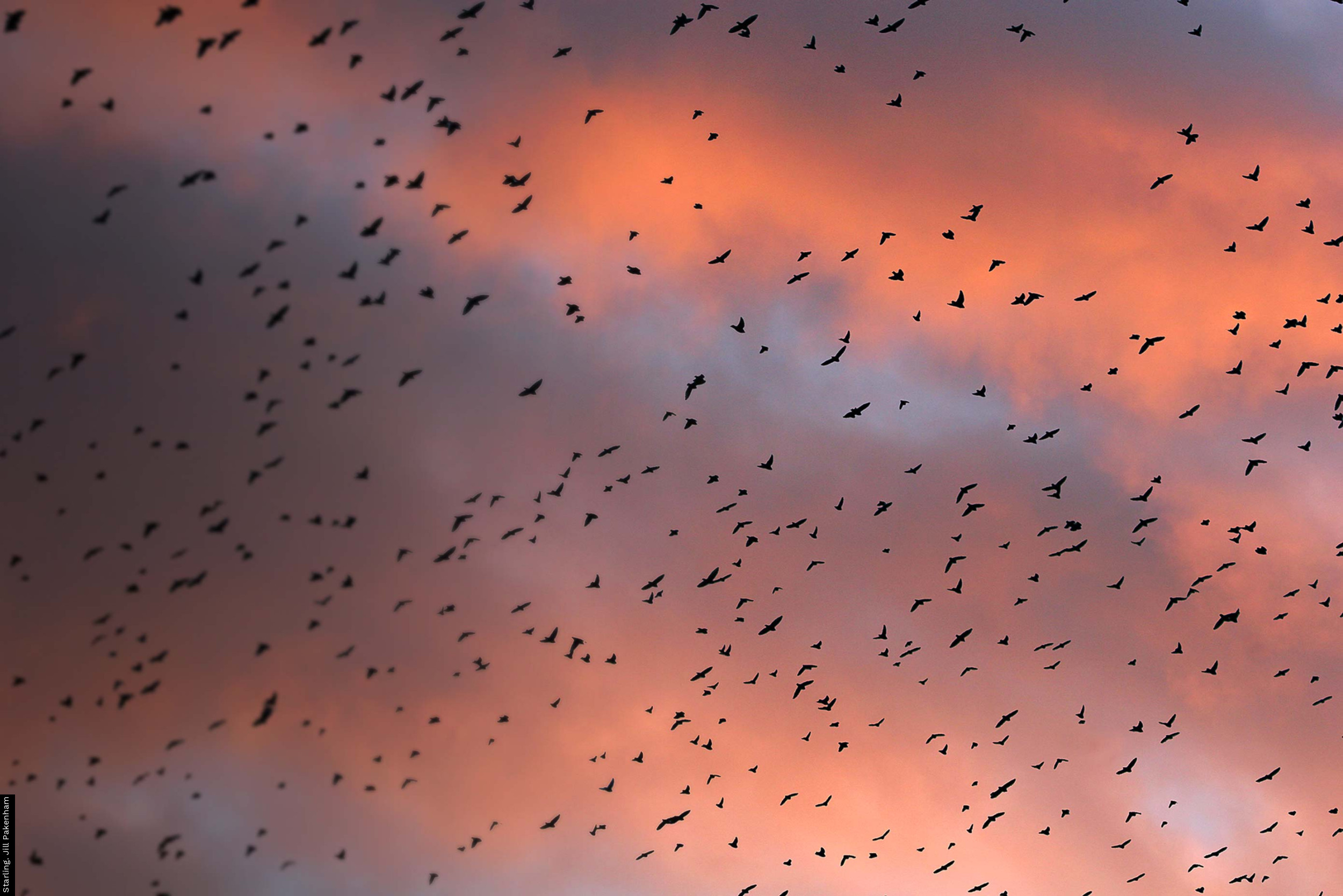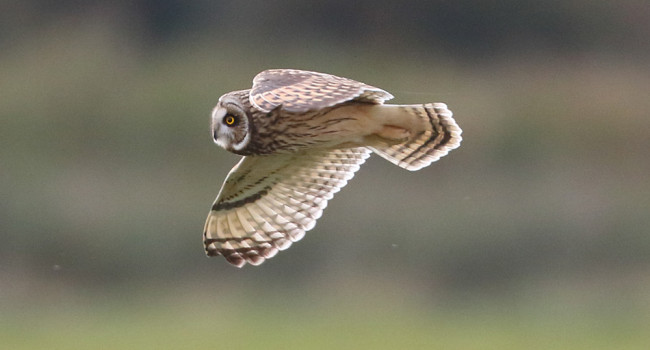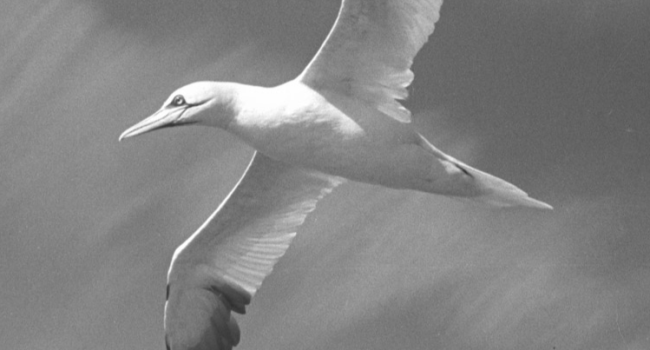Short-eared Owl Tracking Appeal
Please note that this appeal is now closed to donations. If you’d like to support our work, you can donate to a current appeal >
Summary
- Research funded by this appeal has shed new light on the ecology and life history strategies of the Short-eared Owl, a species which has historically been very poorly understood and which is Amber-listed in Birds of Conservation Concern due to a significant contraction in its UK distribution.
- We used tracking devices to reveal fine-scale habitat requirements for Short-eared Owls, and discovered their cross-continental nomadic movements to track the ‘boom-and-bust’ populations of their small mammal prey.
- This research has kick-started a collaborative network of projects across Europe, and provides vital information for the conservation of this charismatic species.
Why we launched the Short-eared Owl Tracking Appeal
The Short-eared Owl is an amazing species: mercurial, elusive and mysterious. The appearance and disappearance of these birds from large regions over the years has fascinated ecologists for decades, and yet the species remained poorly understood, even misunderstood.
Before we launched the Short-eared Owl Tracking Appeal, we knew this species was nomadic, breeding almost prolifically in some years and some areas, yet in others appearing to be absent. We also suspected its UK population to be declining, with the breeding range shrinking by 48% between 1970 and 2010.
The reasons underlying these changes were a mystery. However, after launching the Short-eared Owl Tracking Project in 2019, we were in a position to begin to understand them and work towards securing their future.
Aims of the Short-eared Owl Tracking Project
With the Short-eared Owl Tracking Project, we wanted to:
- Discover the habitat requirements of this species, at both fine- and landscape-scales.
- Find out more about the owls’ nomadic movements, and how these relate to the species’ life history strategies.
- Better interpret any data related to monitoring their status and trends.
- Inform applied conservation strategies for the species and their habitats.
- Encourage other researchers to study the species, including internationally.
Findings of the Short-eared Owl Tracking Project
This project has far exceeded our expectations in terms of capturing relevant data, identifying the true extent of Short-eared Owl nomadism and encouraging international studies of the species.
We have published several scientific papers in peer-reviewed journals as well as given numerous talks and other presentations about our findings.
Short-eared Owl habitat requirements
Our research allowed us to document and quantify Short-eared Owl habitat requirements in dwarf-shrub-grassland mosaic landscapes, greatly improving our knowledge of the optimal habitat conditions for this species. We learned:
- Short-eared Owl breeding home ranges tend to be around 200 hectares, in mixed grassland and heath environments.
- Remaining population strongholds are often in areas with a restricted suite of other apex predators.
- The species’ decline is associated with the maturation of plantation forests.
This information is highly relevant to moorland management strategies, the maintenance and restoration of natural montane habitats and environmental policies related to site protection and condition assessment.
We have also learned more about the environments used by the owls while dispersing from and between their preferred habitats. The data we have gathered about these ‘service station’ sites can be used by conservationists to ensure there is a robust network of these patches across the landscape, and increase the resilience of protected area networks utilised by Short-eared Owls.
Nomadic movements
Perhaps the most exciting data we have collected relates to the Short-eared Owl’s extraordinary nomadic movements, and how these birds track apparently unpredictable food resources across thousands of kilometres.
Short-eared Owls ringed in Britain have been encountered as far away as Russia, North Africa and the Mediterranean, with one female breeding in Scotland and in Norway in 2018! This information has enhanced the broader understanding of monitoring and conservation of nomadic species.
- You can read more about these findings in our press release, Travel far, breed hard, die young! The surprising lifestyle choices of Short-eared Owls.
Collaboration across Europe
This project has also directly collaborated with partners in Iceland and Spain, and further potential collaborations with Short-eared Owl studies starting or proposed elsewhere in Europe and North America are possible.
These collaborations are likely to have impacts beyond those directly related to Short-eared Owls; some projects are considering using these birds as a charismatic flagship species to help conserve the often threatened natural and semi-natural habitats that they use.
Scientific publications
Short-eared Owls undertake intercontinental movements to track boom-and-bust prey populations
Calladine, J., Hallgrimsson, G. T., Morrison, N., Southall, C., Gunnarsson, H., Jubete, F., Sergio, F., & Mougeot, F. (2024). Remote tracking unveils intercontinental movements of nomadic Short-eared Owls (Asio flammeus) with implications for resource tracking by irruptive specialist predators. Ibis 166(3): 896-908
In press / preparation
Calladine, J., Southall, C., Wetherhill, A. & Morrison, N. 2024.Use of dwarf shrubland – grassland mosaics by a nomadic predatory bird, the Short-eared Owl Asio flammeus. Journal of Ornithology
Calladine, J., Southall, C. & Morrison, N. The role of fragmented habitats in facilitating dispersal of a nomadic predatory bird, the Short-eared Owl Asio flammeus.

Support more work like this
Our Short-eared Owl Tracking Appeal is now closed, but you can still support us.
Donating to one of our current appeals will help fund our vital work to secure a better future for birds, for nature and for people.






Share this page